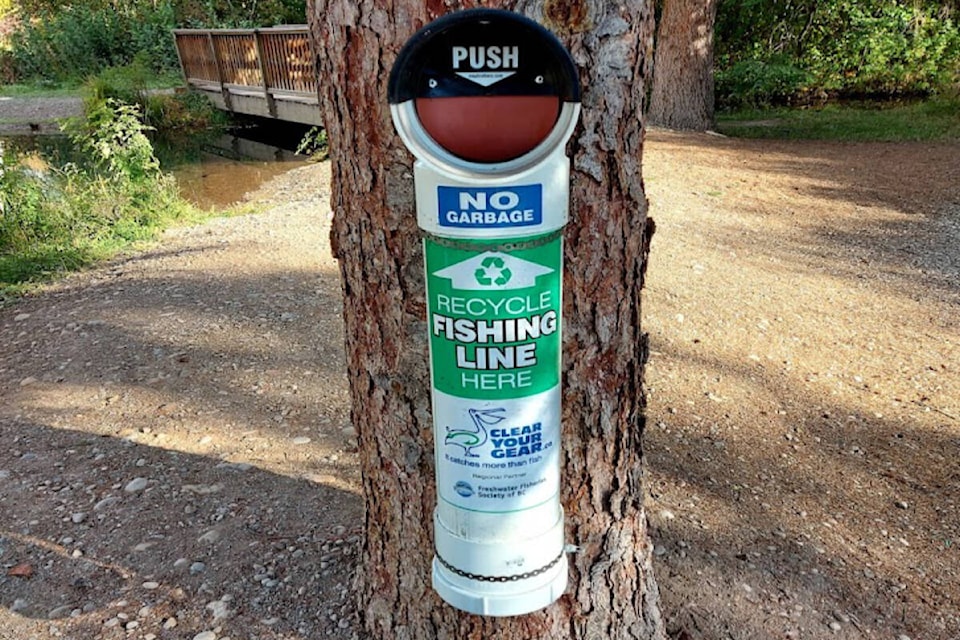Did you know that fishing line can be recycled and re-used, but if left in nature it takes up to 600 years to break down? It is also a large risk for birds and animals.
This from the Freshwater Fisheries Society of BC (FFSBC) as they partner with Clear Your Gear to install fishing-line recycling receptacles across the province.
The Kootenay Trout Hatchery in Fort Steele is one of many locations, and the goal is to facilitate disposal and recycling of fishing line while promoting environmental stewardship by freshwater anglers.
“Most fishing line is made of monofilament, a synthetic fibre that is non-biodegradable and can remain in the environment for up to 600 years, depending on environment factors,” the Society said in a press release. “This is longer than styrofoam cups, plastic bottles and cigarette butts. Fishing line poses a particular risk for birds and animals, as it is often clear, making it hard to see. Birds and animals can easily ingest the line, or become entangled, leading to injury and death. Fishing line is the leading cause of entanglement issues for people, property & wildlife.”
There are 30 receptacles that have been placed at hatchery fishing ponds, high-use urban lakes, high-traffic fishing areas and popular fishing docks. Clear Your Gear is spearheading the program and providing the periscope-shaped receptacles.
“We are very excited to partner with the Freshwater Fisheries Society of BC and expand this program through their networks and expand awareness of the importance of keeping fishing line out of the environment,” said Steve Loney, Community Relations with Clear Your Gear. “When people find out how long fishing line remains in the ecosystem and how much damage it can do, they are often surprised. It motivates them to find in a more environmental solution to used gear.”
Through the program, fishing line is collected from recycling receptacles and cleaned of hooks, leaders, weights, and trash by volunteers, says the FFSBC.
“Line is shipped to the Berkley Pure Fishing company in Iowa where it is melted down into raw plastic pellets. The pellets can be made into other plastic products including various components for the automotive and foot wear industries. Fishing line is made of a high density plastic that requires a unique recycling process. It cannot be recycled through household recycling programs,” FFSCBC adds.
Any line that is braided or contains wire cannot be recycled and should be cut into short pieces and put into the trash.
There is an online map on the Clear Your Gear website that shows all of the receptacle locations, and it will continue to be updated as receptacles are added to communities.
“We have partnered with local organizations, municipalities and governments, utilizing local knowledge to place receptacles where they are the most beneficial to anglers. Maintenance of the receptacles and collection of the used fishing line will be shared by these partners and the Society and we’ve placed them to ensure they are emptied regularly,” said Marleau Brown, Outreach Coordinator with FFSBC. “It’s another tool not only for anglers but for anyone who wants to leave our streams and lakes cleaner than they found them.”
